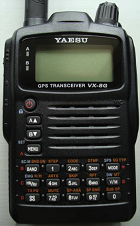High Q is like a tuned bell. It resonates for a long time, but only at one frequency. Low damping; low bandwidth.
When reading about magnetic loop antennas, you often read that they are “high Q.” What on Earth is Q? Here is an intuitive explanation, drawn from the domain of music.
Imagine that you have a handbell, like you might hear in church music. Suppose that this bell has a very pure tone. i.e. It rings at its fundamental frequency, and has weak overtones. When you ring this bell, it resonates loudly at its fundamental frequency. As it sounds, the echo in the room is also at the fundamental frequency, reinforcing the continued sounding of the bell. The bell rings loudly, for a long time, on its fundamental frequency. If you were to look at the acoustic spectrogram of the bell’s sound, you would see a narrow, very tall spectrogram. The energy is concentrated in a narrow frequency range.
Now imagine a similar bell, with a bunch of dents in it. This bell has an impure tone. It rings at its fundamental frequency and also at many overtones and odd frequencies. When you ring this bell, its energy is spread across the audio spectrum. It doesn’t resonate for very long. If you were to look at the acoustic spectrogram of this bell’s sound, you would see a very broad, relatively short spectrogram. The energy is spread across a broad frequency range.
The first bell exhibits high Q. The second bell is low Q.
With a small, magnetic loop antenna, this is a high Q antenna. It is “willing” to be resonated only on its fundamental frequency. You have to change its fundamental frequency (via a variable capacitor) in order to resonate it on a different frequency.
With a big, dipole, where each leg is a quarter wave, fed with ladder line, this is a low Q antenna. You can use it on a broad range of frequencies. It is “willing” to be resonated outside its fundamental frequency.
In the equation for calculating Q, resistance (R) is in the denominator. Therefore, as resistance goes up, Q goes down. Because there is not a lot of wire to radiate, you need the little wire you do have to exhibit high Q in order to resonate effectively on the desired frequency. (You’re concentrating your radiation in a small bit of wire.) Since you need high Q, resistance is your enemy.
